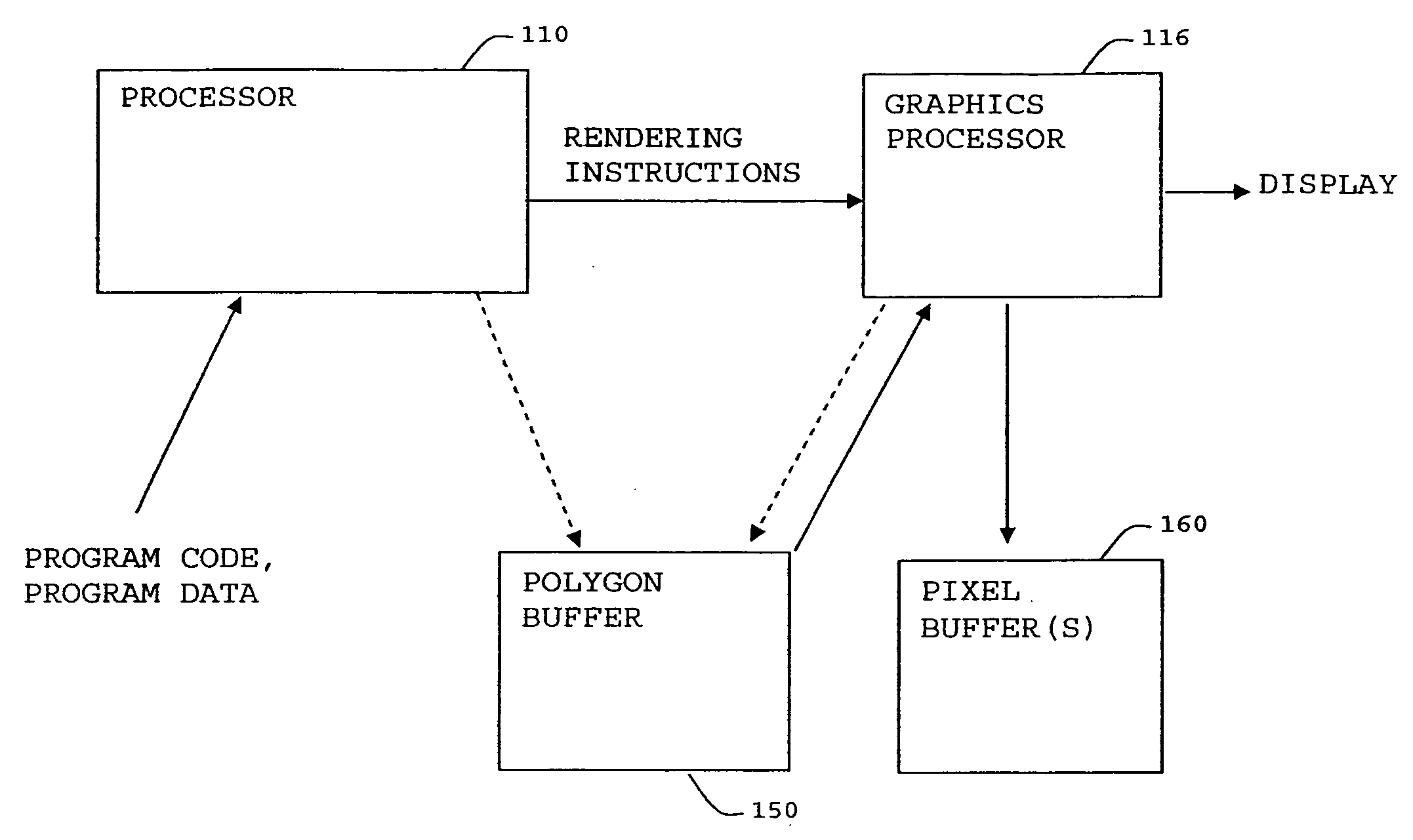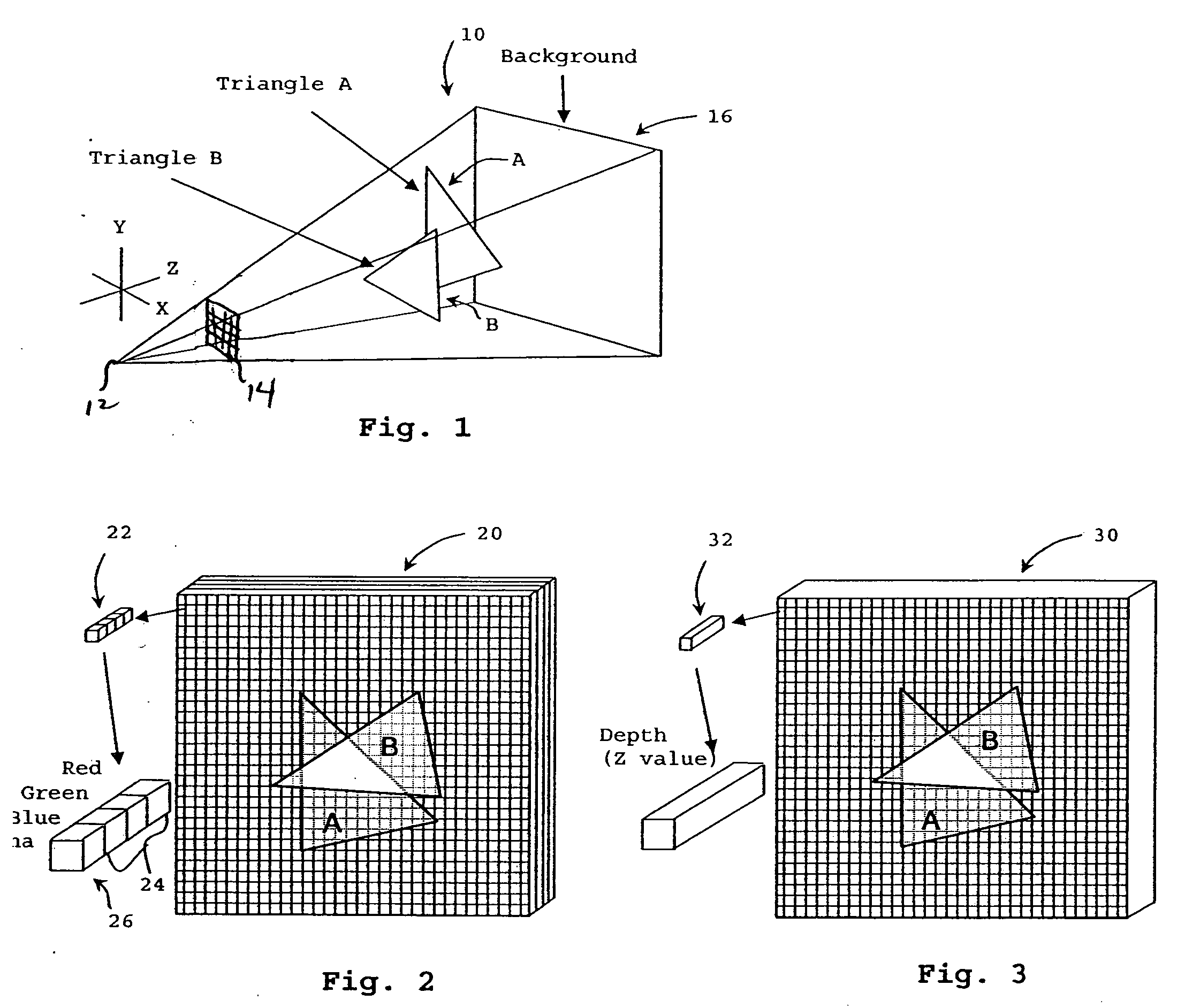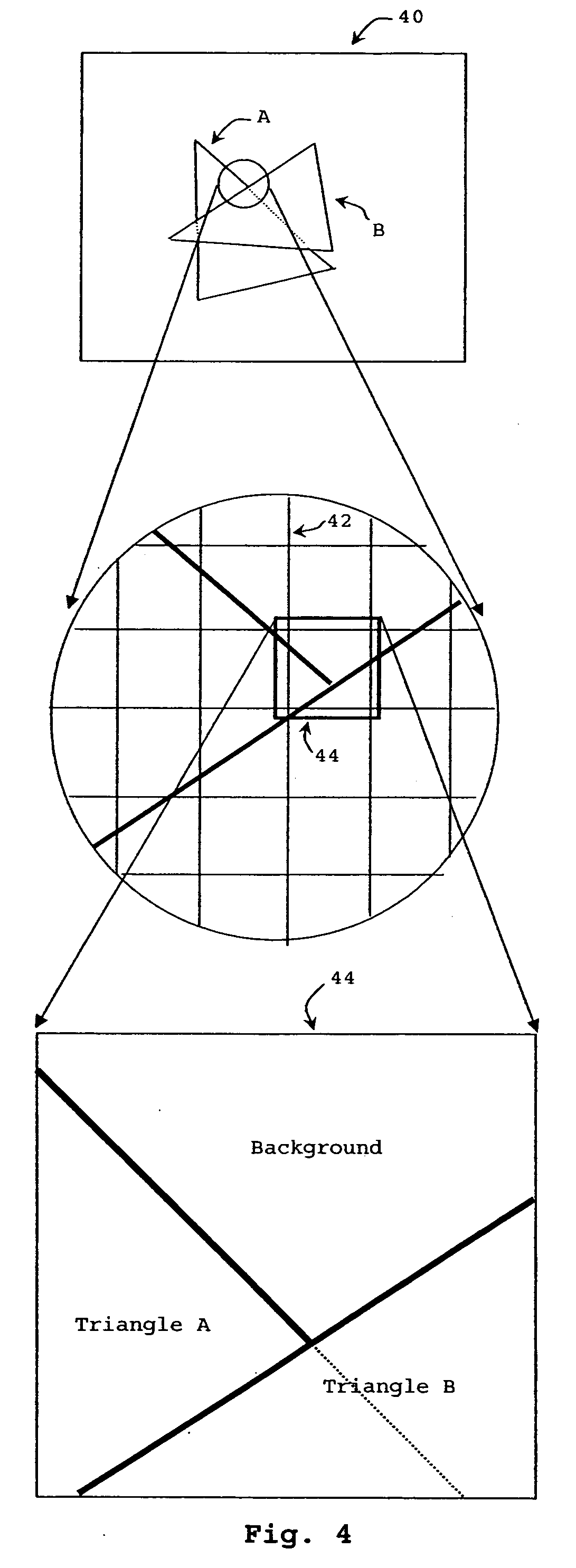Image rendering with multi-level Z-buffers
- Summary
- Abstract
- Description
- Claims
- Application Information
AI Technical Summary
Benefits of technology
Problems solved by technology
Method used
Image
Examples
Embodiment Construction
[0044] As shown in FIG. 4, when rendering elements (such as polygons), a pixel might cover more than one of those elements. In FIG. 4, a view plane 40 is what is being rendered and includes views of triangles A and B. In this case, when mapped to a pixel grid 42, one intersection of the two triangles is within the grid opening for a pixel 44. As illustrated by the zoomed-in view, pixel 44 is partially covered by triangle A, partially covered by triangle B, and partially covered by neither, so the background shows through. For ideal rendering of a color value for pixel 44, the contributions of each of those three elements should be included. This can be done by considering the relative areas of the pixel grid opening that each element occupies and the color / transparency values of each. If all of the polygons are sorted (either for the entire image or using scan strip approaches), then each element that overlaps each pixel can be considered, however for most practical processing syste...
PUM
 Login to View More
Login to View More Abstract
Description
Claims
Application Information
 Login to View More
Login to View More - R&D
- Intellectual Property
- Life Sciences
- Materials
- Tech Scout
- Unparalleled Data Quality
- Higher Quality Content
- 60% Fewer Hallucinations
Browse by: Latest US Patents, China's latest patents, Technical Efficacy Thesaurus, Application Domain, Technology Topic, Popular Technical Reports.
© 2025 PatSnap. All rights reserved.Legal|Privacy policy|Modern Slavery Act Transparency Statement|Sitemap|About US| Contact US: help@patsnap.com



